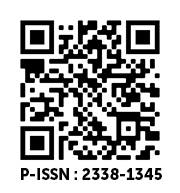Per capita food expenditure in Nay Pyi Taw, Myanmar: Is there household economies of scale?
DOI:
https://doi.org/10.36782/apjsafe.v10i2.164Keywords:
Food expenditure, Income, Household size, Size economiesAbstract
This paper empirically investigates the existence of economies of scale in food consumption, the share of food expense in total household expenditure, and the determinants of per capita food expenditure in Myanmar. The study was conducted with a total of 400 respondents from Nay Pyi Taw region and the survey took place in October 2021. The results are presented into two sections. In the first section, the descriptive statistics of the variables such as the respondents’ age, household size, education and residence are reported. The household monthly income was 227.51 USD, household monthly food expenditure was 112.49 USD, household monthly per capita food expenditure was 36.69 USD, and the share of food expenditure to total household expenditure was 70.20 % on average. In the second section, the inferential statistics of the variables are reported using the Pearson’s correlation analysis and regression analysis. Significant negative relationships were found between adult-equivalent household size and per capita food expenditure, and between income and the share of food expense in total household expenditure. The negative effect of household size on per capita food expenditure indicated by the regression analysis suggested that economies of scale in food consumption existed among the study households. Policy makers therefore need to consider economies of scale when designing the poverty alleviation programs.
Downloads
References
Barten, Anton P. (1964). "Family Composition, Prices and Expenditure Patterns." in Peter E. Hart, Gordon Mills, and John Whitaker, eds. Econometric Analysis for National Planning. London: Butterworths.
Deaton, Angus (1997). The Analysis of Household Surveys: A Microeconometric Approach to Development Policy. Baltimore, MD: Johns Hopkins.
Deaton, Angus and Christina Paxson, “Economies of Scale, Household Size and the Demand for Food,”Journal of Political Economy 106 (October 1998): 897-930.
Flynn, B. B., Schroeder, R. G., & Sakakibara, S. (1994). A framework for quality management research and an associated measurement instrument. Journal of Operations management, 11(4), 339-366.
Horowitz, A. W. (2002). Household size and the demand for food: a puzzle resolved?. V Unpublished Manuscript, University of Arkansas.
Knoema (2018) Myanmar expenditure on food per capita. Accessed on 10 April 2022. https://knoema.com/atlas/Myanmar/topics/Food-Security/Expenditures-Spent-on-Food/Expenditure-on-food-per-capita
Logan, T. D. (2011). Economies of scale in the household: Puzzles and patterns from the American past. Economic Inquiry, 49(4), 1008-1028.
Perali, F. (2008). The second Engel law: Is it a paradox?. European Economic Review, 52(8), 1353-1377.
Rahman, M., Jeon, S. H., & Yoon, K. S. (2020). Estimation of Equivalence Scale and Assessment of Its Impact on
Poverty Measurement in Bangladesh. Sustainability, 12(21), 9081.
Zimmerman, C. C. (1932). Ernst Engel's law of expenditures for food. The Quarterly Journal of Economics, 47(1), 78-101.









